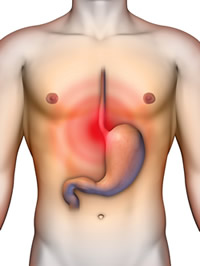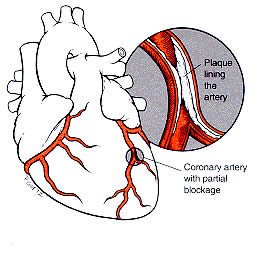Difference between Heartburn and Angina
Key Difference: Heartburn is a condition in which a person experiences a burning sensation or pain in the chest or just behind the breastbone. This burning sensation is caused by acid reflux or when the digestive acid flows up into the esophagus. Angina is a medical condition that is characterized by pain in the chest. It is more formally known as angina pectoris. Angina happens when the blood flow to a certain part of heart is decreased due to build up of plaque.
Heartburn and angina may seem like an unimportant topic to cover as they are both completely different conditions. However, according to research, many people mistook angina as heartburn. Angina is a heart condition where the arteries that supply blood to the heart become thinner because of plague, while heartburn is a condition where stomach acid flows to the esophagus. The symptoms for both conditions seem similar, causing confusion among the two different kinds of medical conditions.
 Heartburn is a condition in which a person experiences a burning sensation or pain in the chest or just behind the breastbone. This burning sensation is caused by acid reflux or when the digestive acid flows up into the esophagus. The acid irritates the esophagus lining causing irritation and uneasiness to the person. Heartburn is also known as pyrosis, cardialgia, or acid indigestion. When a person eats food, the stomach is similar to a one way valve, which opens when food is supposed to go into the stomach. This valve keeps the stomach acid from flowing upwards and irritating the other organs. However, certain foods, medications, nicotine or lying down too quickly after a meal and excess weight, can cause the muscle that acts a blocking valve to relax. The relaxation causes the valve to open and allows the digestive acid to flow upward, causing heartburn.
Heartburn is a condition in which a person experiences a burning sensation or pain in the chest or just behind the breastbone. This burning sensation is caused by acid reflux or when the digestive acid flows up into the esophagus. The acid irritates the esophagus lining causing irritation and uneasiness to the person. Heartburn is also known as pyrosis, cardialgia, or acid indigestion. When a person eats food, the stomach is similar to a one way valve, which opens when food is supposed to go into the stomach. This valve keeps the stomach acid from flowing upwards and irritating the other organs. However, certain foods, medications, nicotine or lying down too quickly after a meal and excess weight, can cause the muscle that acts a blocking valve to relax. The relaxation causes the valve to open and allows the digestive acid to flow upward, causing heartburn.
Heartburn is common and can occur as frequently has once a week for some people. However, any more than one per week can point to a much serious disease known as gastroesophageal reflux disease or GERD. GERD is a chronic disease where acid constantly flow from the stomach to the lower esophagus, thus burning the esophagus. Long-term GERD can result in Barrett's esophagus. Barrett's esophagus is a condition where the color and composition of the esophagus change due to constant exposure to digestive acid. Barrett’s can inturn cause esophageal cancer. Heartburn can also be caused by other conditions such as inflamed stomach lining, peptic ulcer or a hiatal hernia.
Symptoms of heartburn include: burning feeling (in the chest or behind the breast bone), chest pain, burning in the throat, hot-sour or acidic taste in the back of the throat, difficulty swallowing, feeling of sickness or nausea, feeling of food sticking in the middle of chest or throat, coughing, sore throat, etc. Other rare symptoms include pain in the back, jaw, shoulders, neck or arms.

Angina is a medical condition that is characterized by pain in the chest. It is more formally known as angina pectoris. Angina happens when the blood flow to a certain part of heart is decreased due to build up of plaque. Note that the blood flow does not completely stop; that condition is known as heart attack. The angina is caused by ischemia of the heart muscle because obstruction or spasm of the coronary arteries. When the arteries become thin and are not able to provide oxygen rich blood to the heart, the heart must use alternate, less efficient forms of fuel. The byproduct of this alternate form is lactic acid, which builds up in the muscle and causes pain.
Anginas are often a result of some type of heart disease and may also occur in the absence of a disease. In many causes, anginas are a precursor to a heart attack. Coronary Artery Disease is one of the common reasons of angina. Other risk factors also include: cigarette smoking, Diabetes mellitus, Dyslipidemia, family history of heart diseases, hypertension, kidney disease, obesity, physical inactivity, prolonged psychosocial stress, etc. There are three different types of angina: Stable angina, unstable angina, Prinzmetal's angina and Microvascular Angina. Stable angina is predictable and occurs in a pattern making it easier to understand when it will occur. Unstable angina occurs at various different times, making it difficult to figure out when it occurs. The angina itself may also differ in terms of frequency, duration it lasts, the intensity of the pain, etc. Prinzmetal's angina is a type of angina that occurs when the patient is at rest or exposed to cold temperatures. Microvascular angina can be much sever than other anginas and can even last longer. This type of angina cannot be relieved using medications.
Symptoms of angina include: pain, discomfort, squeezing, pressure, heaviness, tightening, burning or aching feeling in the chest or behind the breastbone. The pain can also spread to the jaw, neck, arms, shoulders, throat, back and even teeth. Other symptoms also include heartburn, indigestion, weakness, sweating, nausea, cramping and shortness of breath. Anginas can be treated using medications. To many people, angina may feel similar to indigestion or heartburn. However, if it occurs constantly, they should show it to a medical professional.
Image Courtesy: articles.washingtonpost.com, healthgiants.com









Add new comment